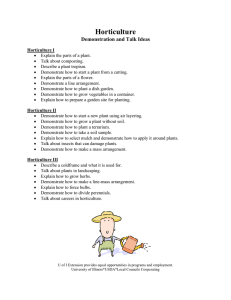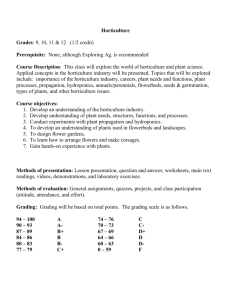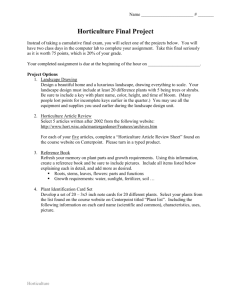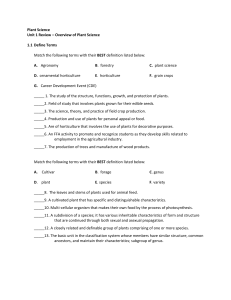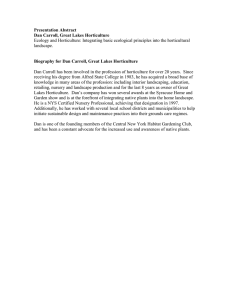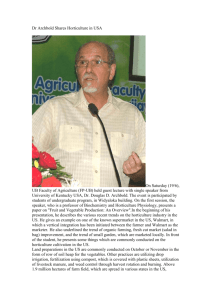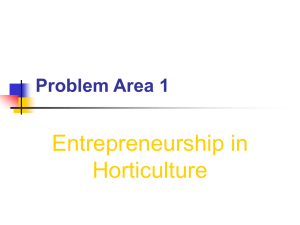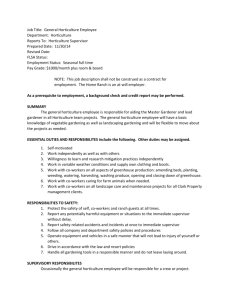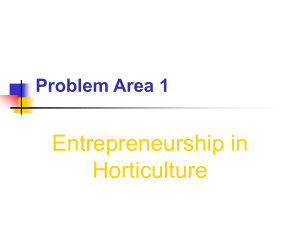Horticulture as Therapy - Mississippi State University Extension
advertisement
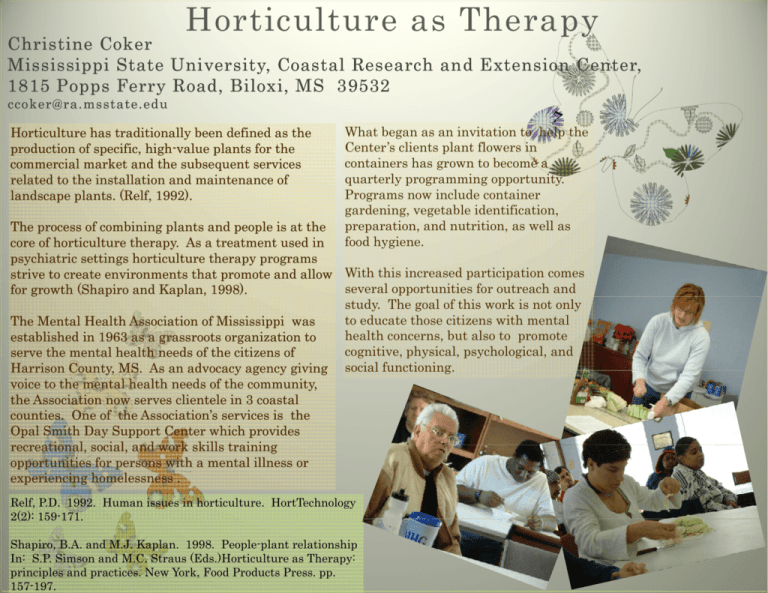
Horticulture as Therapy Christine Coker pp State University, y Coastal Research and Extension Center, Mississippi 1815 Popps Ferry Road, Biloxi, MS 39532 ccoker@ra.msstate.edu Horticulture has traditionally been defined as the production of specific specific, high-value plants for the commercial market and the subsequent services related to the installation and maintenance of landscape plants. (Relf, 1992). What began as an invitation to help the Center’ss clients plant flowers in Center containers has grown to become a quarterly programming opportunity. Programs now include container gardening, vegetable identification, preparation, ti and d nutrition, t iti as well ll as food hygiene. Th process off combining The bi i plants l and d people l iis at the h core of horticulture therapy. As a treatment used in psychiatric settings horticulture therapy programs strive to create environments that promote and allow With this increased participation comes several opportunities for outreach and growth (Shapiro and Kaplan, for g p p , 1998). study. The goal of this work is not only to educate those citizens with mental The Mental Health Association of Mississippi was health concerns, but also to promote established in 1963 as a grassroots organization to cognitive, physical, psychological, and serve the mental health needs of the citizens of Harrison County, County MS. MS As an advocacy agency giving social functioning. voice to the mental health needs of the community, the Association now serves clientele in 3 coastal counties. One of the Association’s services is the Opal Smith Day Support Center which provides ti l social, i l and d work k skills kill training t i i recreational, opportunities for persons with a mental illness or experiencing homelessness . Relf, P.D. 1992. Human issues in horticulture. HortTechnology 2(2): 159-171 159 171. Shapiro, B.A. and M.J. Kaplan. 1998. People-plant relationship In: S.P. Simson and M.C. Straus (Eds.)Horticulture as Therapy: principles and practices. New York, Food Products Press. pp. 157-197.
